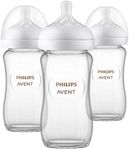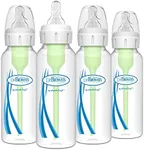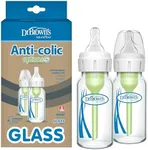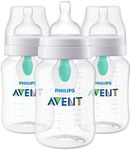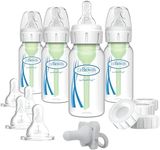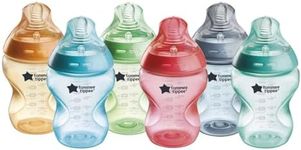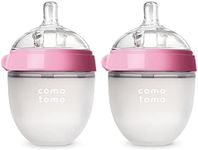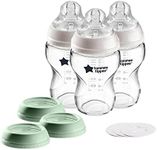Buying Guide for the Best Baby Bottles
Choosing the right baby bottle can make feeding time smoother for both you and your baby. There are many types of bottles available, each designed to address different needs such as ease of cleaning, reducing colic, or mimicking breastfeeding. When picking a baby bottle, it's important to consider your baby's age, feeding habits, and any specific challenges like gas or reflux. Understanding the key features will help you select a bottle that fits your lifestyle and supports your baby's comfort and health.MaterialBaby bottles are commonly made from plastic, glass, or silicone. The material affects the bottle's weight, durability, and ease of cleaning. Plastic bottles are lightweight and less likely to break, making them convenient for travel, but they may scratch over time. Glass bottles are heavier and breakable but are easy to clean and don't retain odors or stains. Silicone bottles are soft, flexible, and durable, offering a middle ground. When choosing, think about where and how you'll use the bottle most—at home, on the go, or in daycare—and whether you prioritize durability, safety, or ease of cleaning.
Nipple Shape and FlowThe nipple is the part your baby sucks on, and its shape and flow rate can affect feeding comfort and efficiency. Nipples come in various shapes, such as standard, wide, or orthodontic, and flow rates from slow to fast. Newborns usually need a slow flow to prevent choking, while older babies may prefer a faster flow. If your baby is transitioning from breastfeeding, a wide or breast-shaped nipple may help. Consider your baby's age, feeding speed, and whether they are breastfed or bottle-fed when choosing the nipple type and flow.
Anti-Colic FeaturesSome bottles have special vents or valves designed to reduce the amount of air your baby swallows, which can help prevent gas, colic, and spit-up. These anti-colic systems can be simple or more complex, with extra parts to clean. If your baby is prone to fussiness or digestive discomfort, an anti-colic bottle may be helpful. However, if your baby feeds comfortably without issues, a standard bottle may be sufficient. Assess your baby's feeding behavior to decide if this feature is necessary.
Bottle Size and ShapeBaby bottles come in different sizes, typically ranging from 4 to 9 ounces, and various shapes, such as straight, angled, or wide. Smaller bottles are ideal for newborns who eat less at each feeding, while larger bottles suit older babies with bigger appetites. The shape can affect how easy the bottle is to hold and clean. If you want a bottle that grows with your baby, consider one with interchangeable parts or a size that fits your baby's current and near-future needs.
Ease of CleaningSome bottles have simple designs with few parts, making them quick and easy to clean, while others have multiple pieces, especially those with anti-colic features. Bottles with wide necks are generally easier to wash by hand or in the dishwasher. If you value convenience or will be cleaning bottles frequently, look for designs that minimize hard-to-reach areas and are dishwasher safe. Your cleaning routine and how many bottles you use daily can help guide this choice.
